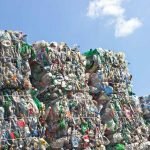Have you ever walk down a road only to see some persons or a group of persons picking up metals from the streets? While the activity might seem questionable to some, others might just be curious to know why.
The reason is that scrap metals are valuable and could translate to money, only to those who understand their worth.
What are scrap metals?
Scrap metals consist of materials that can be recycled. They originate from leftover products of manufacturing and consumption such as vehicles, building materials, and other kinds of surplus materials. As earlier said, unlike waste, scrap has a monetary value attached to it.
Where can one get scrap?
You can find scrap metals in auto repair shops, plumbing sites, demolition sites, residential areas, or business environments. There are people who remove scraps from the environment of people that don’t need it, such a person is called a “scrapper”.
Scrap metal is said to originate from different sources and is made up of a mixture of different metals. There are scraps that need special treatment before they can be recycled or melted into something else while some don’t. Once picked, a scrap metal is taken to a place called a junkyard after which it is processed for later manufacturing or is melted into new products.
Scrap metals could come in varieties of forms, sizes, and shapes and can contain different properties. Different kinds of metals have unique properties. When the metal products we use every day are no longer useful, either they are discarded or recycled to be used on other projects or products. A quick fact about metals is that they can go through recycling without losing their quality.
Before you venture into the business of collecting scrap for profit, endeavor to know the differences between ferrous and nonferrous metals. Ferrous metals contain iron and it is magnetic while nonferrous metal is also called pure metal. It doesn’t contain iron and it is resistant to corrosion.
Examples of ferrous metals include; Carbon steel, cast iron, stainless steel, alloy steel and wrought iron while nonferrous metals are Aluminium, Copper, brass, lead, Gold, Magnesium, platinum, Iridium, Silver, Tin, and Zinc.
Recycling metals may include processes like :
- Collection of scraps, transporting them to a recycling center.
- Sorting of the different metals to determine whether they are ferrous or nonferrous
- Removal of impurities from those metals
Is metal recycling beneficial for the environment?
One major benefit of recycling scrap metal is that it helps to keep items that are unused from our land and it lessens the need to excavate and process new metals, which in turn preserves resources. In other words, through recycling, the environment is preserved and fewer damages to the earth’s crust will be recorded.
Metals like aluminum, for instance, require 95% less energy to recycle than it does to produce it from the raw material state. In other words, Metal recycling is more economic, and less energy is required or needed to produce metal.
Finally, raw materials would be saved and their reserves will last longer.
















